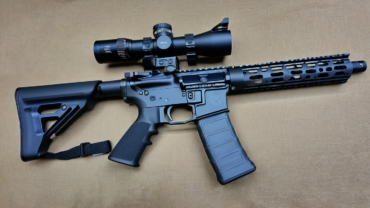Staying Cool Without Power – The Art of Comfort in Energy Crisis

Imagine a sweltering summer day, the heat rising in waves off the pavement, and suddenly, your reliable air conditioning unit goes silent. The power’s out, but that doesn’t mean you’re destined to swelter in the heat.
Welcome to the world of staying cool without power, a realm where innovation meets necessity. Here, we explore the myriad of ingenious ways to keep your cool, literally, when the power grid fails you.
From ancient cooling methods to modern, energy-efficient hacks, we’ll delve into a variety of fascinating topics. Each is designed to equip you with the knowledge and skills to combat the heat, even when the power is out.
Prepare to be surprised, intrigued, and most importantly, educated on how to maintain comfort in the face of an energy crisis. So, let’s set off on this journey of discovery together, ensuring you’re never left sweating on a hot day again.
What Is Evaporative Cooling?
Evaporative cooling is a natural phenomenon that takes advantage of the principle of evaporation to cool air. This process occurs when liquid turns into gas, absorbing heat in the process and thus reducing the temperature of the surrounding air. It’s a cost-effective and eco-friendly method to keep cool without relying on power-hungry air conditioning units.
In the context of staying cool without power, evaporative cooling can be a lifesaver. It’s a principle utilized in many DIY cooling methods. For instance, you can hang a damp cloth in front of a window, and as the breeze evaporates the water, the air cools down. Another method is filling a bowl with ice and placing it in front of a fan. As the ice melts and evaporates, it cools the circulating air.
Evaporative coolers, also known as swamp coolers, are devices designed to harness this principle. They use a fan to draw in hot, dry air, pass it over water-soaked pads, and then distribute the cooled air throughout the room. They are most effective in dry climates where the relative humidity is low.
While evaporative cooling doesn’t provide the same level of cooling as traditional air conditioning, it’s a valuable method for staying cool without power. It’s a testament to the innovative ways we can leverage natural processes to improve our comfort and survivability in challenging situations.
How To Use Fans Effectively?
Fans are a crucial tool for staying cool when there’s no power. The key is understanding how they work and how to use them effectively. Fans don’t actually cool the air; instead, they move air around, creating a breeze that speeds up evaporation of sweat from your skin, making you feel cooler.
One technique is to set up multiple fans in a way that they create a cross breeze. Position one fan at a window or door, blowing cooler air from outside into the room. Place another fan on the opposite side of the room, blowing hot air out. This helps to circulate air and keep the room cooler.
Another method is to use a fan in conjunction with a bowl of ice or a wet cloth. Position the fan so that it blows over the ice or cloth. As the ice melts or the cloth evaporates, the fan will distribute the cooler air around the room.
Remember to turn off fans in unoccupied rooms. Fans cool people, not rooms, so a running fan in an empty room is just wasting energy.
Finally, maintain your fans regularly. A dusty or dirty fan is less effective at moving air. Clean your fans regularly to ensure they’re working at their best.
Using fans effectively is a simple yet potent strategy for staying cool without power.
Can Plants Help Cool My Home?
Plants are not just for decoration; they can also play a significant role in keeping your home cool, especially during the hot summer months. By absorbing sunlight, plants can reduce the amount of heat that enters your home, thereby helping it stay cool. This is particularly beneficial in a situation where you are trying to stay cool without power.
One way plants help cool your home is through a process called transpiration. This is where they release moisture into the air, creating a cooling effect similar to a natural air conditioner. Certain types of plants, such as ferns, are known for their high transpiration rates and can be particularly effective in cooling your home.
Here are a few plants that can help cool your home:
- Ferns: These plants are known for their high transpiration rates, which can help cool your home.
- Aloe Vera: This plant not only has healing properties but also helps in cooling the surrounding air.
- Snake Plant: This plant is great for purifying the air and also aids in cooling.
In addition to these, strategic placement of plants can also help in cooling. For instance, placing plants near windows can block out sunlight, reducing the amount of heat that enters your home. Also, having indoor plants can improve air quality, making your home feel fresher and cooler.
While plants can help keep your home cool, it’s also important to consider other energy-efficient methods such as using thermal curtains or insulating your home properly. Remember, every small step can contribute to a cooler and more comfortable home, even without the use of power.
What Are Cooling Bandanas?
Cooling bandanas are innovative accessories designed to help you stay cool without power. They are typically made from a special fabric that retains water while remaining relatively dry to the touch. When worn around the neck or forehead, these bandanas can significantly reduce body temperature, making them a perfect solution for staying cool without power.
Most cooling bandanas work by harnessing the power of evaporation. You simply wet the bandana, wring out the excess water, and then wear it. As the water evaporates, it draws heat away from your body, effectively cooling you down. This is an example of passive cooling, a method that doesn’t require any electricity.
Here are a few key features of cooling bandanas:
- Durable and reusable
- Lightweight and comfortable
- Easy to activate
- Long-lasting cooling effect
Cooling bandanas are not just useful for hot summer days. They are also popular among athletes, construction workers, and anyone else who needs to stay cool during strenuous activities. Plus, they are portable and easy to use, making them a great option for camping trips, outdoor festivals, and other events where access to electricity might be limited.
Remember, staying cool without power doesn’t have to be a challenge. With a cooling bandana, you can beat the heat and stay comfortable, no matter where you are or what you’re doing.
How To Stay Hydrated?
Staying hydrated is an essential part of maintaining your body temperature, especially when you’re without power and air conditioning. One of the most effective ways to stay hydrated is by drinking plenty of water. It’s recommended to consume at least eight glasses of water every day.
In addition to water, you can also consume hydrating foods like fruits and vegetables. Foods such as cucumbers, watermelon, and strawberries contain high water content and can contribute to your daily fluid intake.
Another important aspect of staying hydrated is to limit the intake of dehydrating beverages like alcohol and caffeine. These drinks can increase your body temperature and make you feel hotter.
Rehydration salts and electrolyte solutions can also be beneficial, especially if you’re sweating a lot. They not only replenish the water levels in your body but also replace essential minerals lost through sweat.
Remember, if you’re feeling thirsty, it’s a sign that your body is already dehydrated. So, it’s important to drink water regularly, even if you’re not feeling thirsty.
Lastly, wearing light-colored, loose clothing can help keep your body cool and reduce the need for excessive hydration. Dark, tight clothes can increase your body temperature, making you sweat more and increasing your need for water.
Remember, staying hydrated is not just about drinking water, but also about managing your body temperature and reducing your body’s need for excessive hydration.
How Can I Use Insulation To Stay Cool?
Insulation is a key player in maintaining a cool environment, especially during power outages. It works by reducing the heat transfer between different areas, keeping the inside of your house cool in the scorching summer heat.
One effective way to use insulation is by installing it in your attic. Since heat rises, a well-insulated attic can prevent the heat from seeping into the rest of your house. It’s crucial to use high-quality insulation materials like fiberglass or cellulose to ensure the best results.
Another important area to insulate is your windows. Using reflective window film or thermal curtains can help block the sun’s rays, keeping your home cool.
For those living in extremely hot climates, insulating the walls and floors can also be beneficial. This can prevent heat from entering through these surfaces, maintaining a comfortable temperature inside.
Lastly, remember to seal any leaks or gaps in your home. This can prevent hot air from entering and cool air from escaping, enhancing the effectiveness of your insulation.
- Insulate your attic with high-quality materials.
- Use reflective window film or thermal curtains.
- Insulate walls and floors in hot climates.
- Seal any leaks or gaps in your home.
By effectively using insulation, you can maintain a cool and comfortable environment, even without power. Remember, staying cool without power is not just about comfort, but also about safety, as excessive heat can lead to health issues.
What Are The Benefits Of Cold Showers?
Cold showers are not just a method of staying cool without power, they also offer numerous health benefits. First and foremost, cold showers can help improve blood circulation. When exposed to cold water, your body works harder to maintain its internal temperature, thus boosting your heart rate and enhancing circulation. This improved circulation can lead to better overall cardiovascular health.
Another benefit is the bolstering of your immune system. Cold showers can stimulate the production of white blood cells, which fight off diseases. This is because your body, in response to the cold, accelerates its metabolic rate and activates its immune system.
Cold showers also play a significant role in mood enhancement. The shock of cold water can stimulate the production of mood-boosting hormones such as endorphins, reducing stress levels and potentially even alleviating symptoms of depression.
Moreover, cold showers can contribute to healthier skin and hair. Cold water tightens the pores on your skin, preventing them from getting clogged, and it can make your hair appear shinier, stronger, and healthier by closing hair cuticles.
Lastly, cold showers can aid in weight loss. The cold temperature forces your body to work harder to stay warm, thereby burning calories. This process is known as thermogenesis and can aid in weight management.
Remember, while cold showers offer numerous benefits, it’s essential to listen to your body and not push yourself if the cold is too uncomfortable.
How To Create A DIY Air Conditioner?
Creating your own DIY air conditioner is an effective way to stay cool without power. The first step is to gather the necessary materials: a cooler, a fan, and some PVC pipes. Cut a hole in the top of the cooler to match the diameter of the fan and another for the PVC pipe.
Next, fill the cooler with ice or frozen water bottles. Position the fan on top of the hole you cut and secure it with duct tape. Insert the PVC pipe into its corresponding hole. Now, when you turn on the fan, it will draw air over the ice, cooling it, and then push it out through the PVC pipe, cooling your room.
Remember, the size of your DIY air conditioner will directly affect its cooling capacity. A larger cooler filled with more ice can cool a larger space. Also, using a battery-powered fan will ensure your DIY air conditioner continues to function even during a power outage.
This DIY solution is not only cost-effective, but it also promotes eco-friendliness by reducing energy consumption. So, the next time you find yourself without power on a hot day, don’t sweat it. With a little creativity and some basic materials, you can create your own air conditioner and stay cool without relying on electricity.
Concluding Thoughts on Staying Cool Without Power
In summary, the art of staying cool without power is a multifaceted approach that requires a blend of both innovative and traditional methods. We’ve discussed key strategies such as the science of evaporative cooling, the strategic use of fans, the cooling effects of plants, and the benefits of cooling bandanas.
We’ve also delved into the importance of staying hydrated, the role of insulation in maintaining cool temperatures, the refreshing benefits of cold showers, and the ingenuity of creating a DIY air conditioner. Each of these methods offers unique benefits and can be combined to create an effective strategy for staying cool without power.
As we move forward, it’s essential to continue exploring and implementing these techniques. The future may bring new developments and trends that could further enhance these strategies. However, the principles we’ve discussed remain timeless and universally applicable.
Staying cool without power is not just about comfort, but also about sustainability and resilience in the face of power outages or energy shortages. By understanding and applying these concepts, you can not only stay cool, but also contribute to a more sustainable and energy-efficient world.









